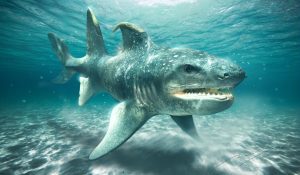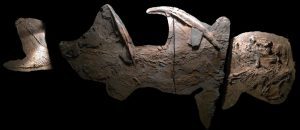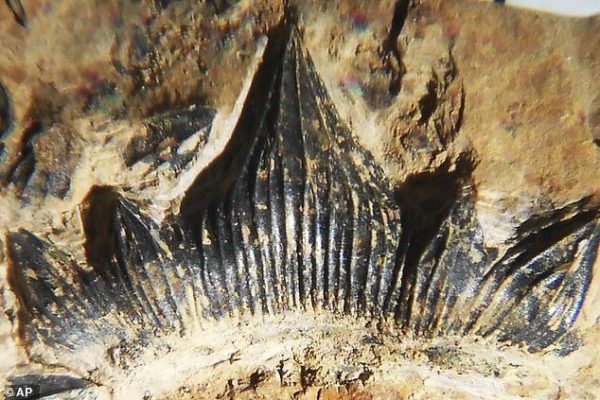In the rugged landscapes of the Manzano Mountains in New Mexico, a team of researchers has unveiled a fascinating discovery – the fossils of a 300-million-year-old shark, now identified as a distinct species named Dracopristis hoffmanorum, or Hoffman’s Dragon Shark. The formidable creature measured around 6.7 feet and earned its initial moniker, ‘Godzilla Shark,’ due to its dragon-like jawline and imposing 2.5-foot fin spines.

This prehistoric shark, belonging to the ctenacanth branch, has recently been detailed in a publication by the New Mexico Museum of Natural History & Science. The exhaustive study, spanning seven years, involved meticulous excavation, preservation efforts, and comprehensive analysis, including a CT scan at a medical center to confirm the uniqueness of the fossilized specimen.
The fossils were first discovered by John-Paul Hodnett, who named the creature in honor of the Hoffman family that owns the land where the fossils were found. The formal naming, ‘Hoffman’s Dragon Shark,’ also pays homage to the dragon-like features of the shark’s jawline and its distinctive fin spines.

The excavation site, located in eastern Albuquerque, proved to be rich in fossils, making it an accessible and intriguing location for paleontological exploration.
The uniqueness of this ancient shark lies not only in its size and intimidating appearance but also in the structure of its teeth. Unlike the spear-like rows of teeth seen in related species, the teeth of Dracopristis hoffmanorum are squatter and shorter, measuring less than an inch in length. Hodnett, the discoverer, notes that these teeth were well-suited for grasping and crushing prey, indicative of an omnivorous diet.

The significance of this fossil extends beyond its fearsome appearance. It represents the most complete ctenacanth shark fossil ever discovered in North America, providing a valuable window into the evolutionary history of this branch. The ctenacanths split from modern sharks and rays about 390 million years ago and eventually went extinct approximately 60 million years later.
The fossilized remains of Dracopristis hoffmanorum offer a detailed snapshot of a creature that roamed the oceans around 300 million years ago. The researchers believe that this dragon shark inhabited the shallows along the coast in the seaways that covered eastern New Mexico during that era. Its potential prey included crustaceans, fish, and even other sharks.

The excavation and study of this ancient shark provide insights into the diverse marine life that thrived in prehistoric times. The meticulously preserved fossil skeleton and the detailed analysis conducted by the interdisciplinary team of researchers shed light on the behaviors, adaptations, and ecological roles of these fascinating creatures from the distant past.
The discovery of Hoffman’s Dragon Shark adds another chapter to the ongoing exploration of Earth’s ancient inhabitants. As paleontologists continue to unravel the mysteries of prehistoric life, each fossilized find contributes to our understanding of the rich tapestry of biodiversity that has shaped the planet over millions of years.





